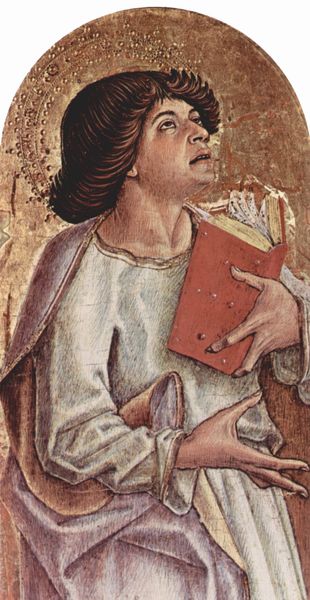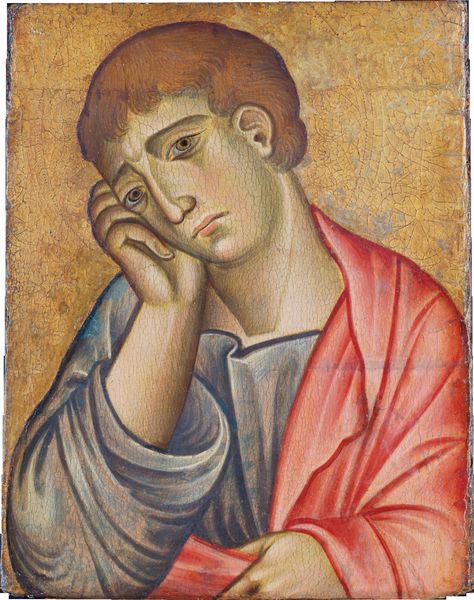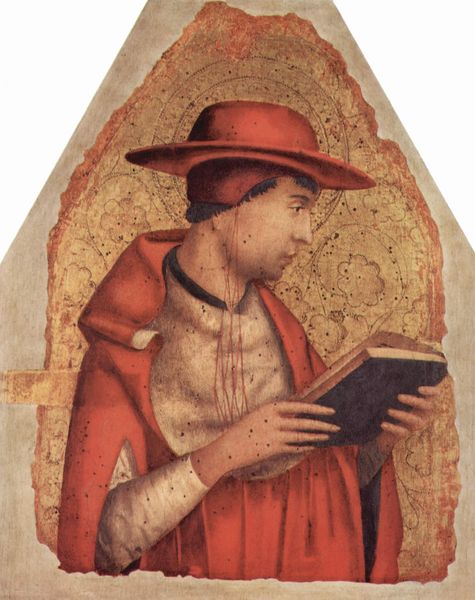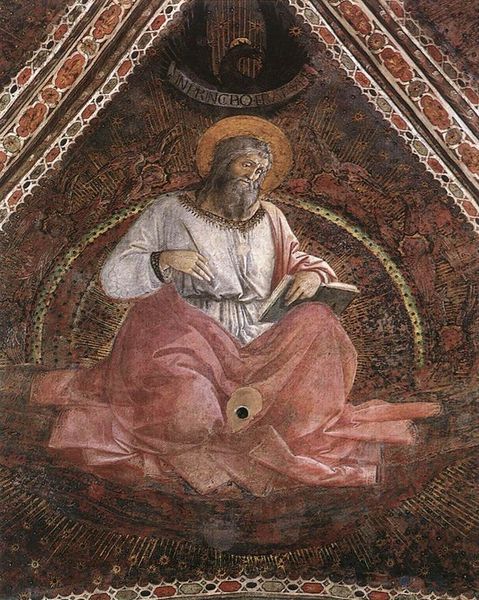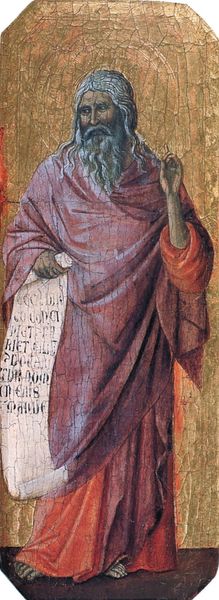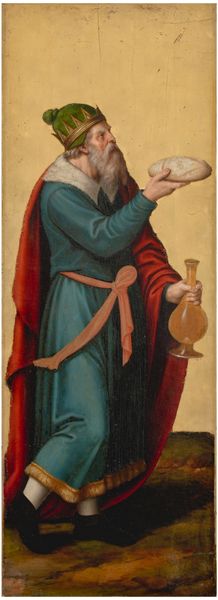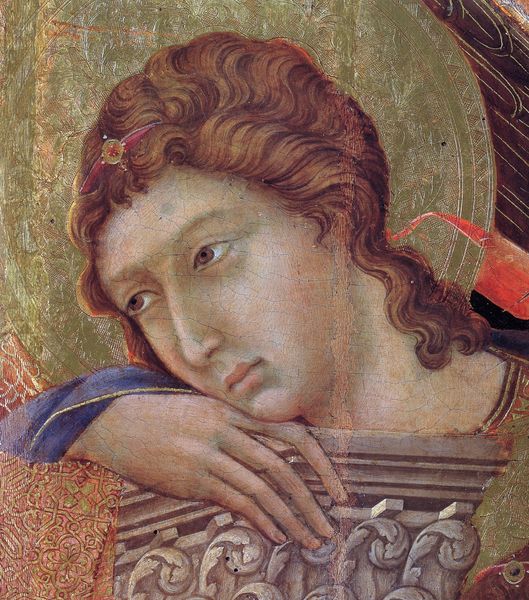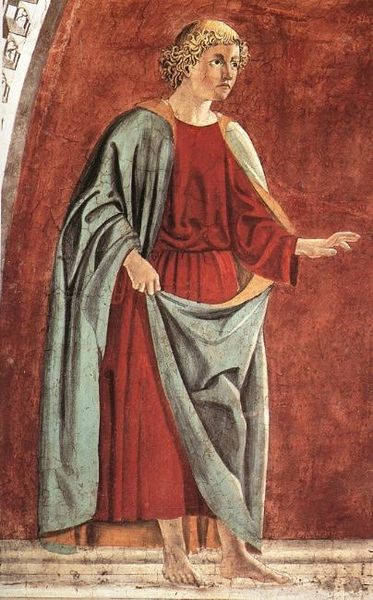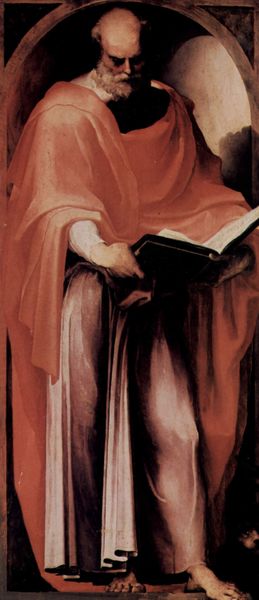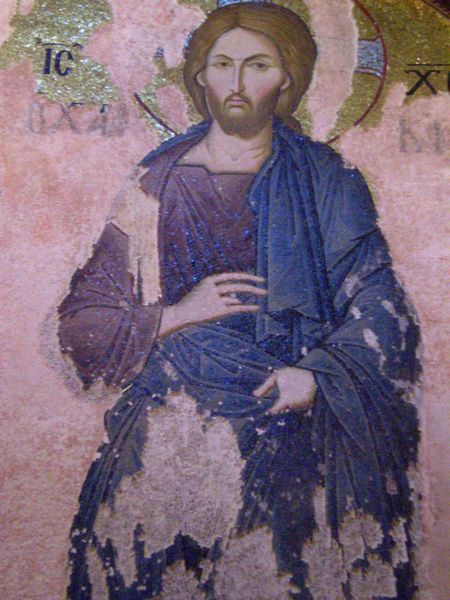
painting, oil-paint
#
portrait
#
medieval
#
narrative-art
#
painting
#
oil-paint
#
oil painting
#
italian-renaissance
Dimensions: 28 x 21 cm
Copyright: Public domain
Curator: Here we have Carlo Crivelli’s "Saint John the Evangelist," an oil painting dating back to around 1475, currently held at the Palazzo Brera in Milan. Editor: It's striking. Immediately, I’m drawn to the contrast. The delicate halo and swirling hair paired with the rough, almost weathered, texture of the skin. It's compelling and a bit unsettling. Curator: The portrayal is certainly unconventional for its time. If we examine the historical and religious context, Saint John was seen as a figure of divine inspiration, yet here Crivelli depicts him in a way that emphasizes human contemplation and inner thought. Notice the finger to the lips. It makes me think about knowledge production and perhaps, control of information during that period. Editor: I agree that there's definitely a focus on human rather than solely divine aspects. What fascinates me are the materials Crivelli used – the oil paint. This technique would have offered him unprecedented possibilities for depicting those minute details and the way he captures the play of light on the Saint’s face and hands really underscores his skill. Consider the value and acquisition of such materials! Curator: Absolutely. And within that technical mastery, we see how Crivelli, perhaps intentionally or unintentionally, reinforced specific gender norms. Saint John, though a male figure, is given androgynous features; there’s almost a softness to his gaze that challenges rigid Renaissance depictions of masculinity. It could open us up to queer readings of Renaissance portraiture. Editor: Now, consider the craft. Look at the detail in the book. Crivelli has gone to painstaking lengths to represent the physical form of a book, not just the textual knowledge it contains. The binding, the pages slightly browned with age—it speaks to a culture where the physical object of a book held immense value. Curator: That also highlights a potential access gap to knowledge! And to return to the Saint, his youth underscores a complex interplay of innocence and profound knowledge – ideas and characteristics ascribed differently, historically, based on gender and class. Editor: In essence, this work by Crivelli compels us to look beyond the surface and delve into the complexities of production, materiality, religious expression and historical values, questioning accepted notions of representation. Curator: A provocative synthesis of art history, gender theory, and the sociology of knowledge all contained in one figure. Editor: Absolutely, and a remarkable demonstration of the power of materials and the skills of the maker.
Comments
No comments
Be the first to comment and join the conversation on the ultimate creative platform.
